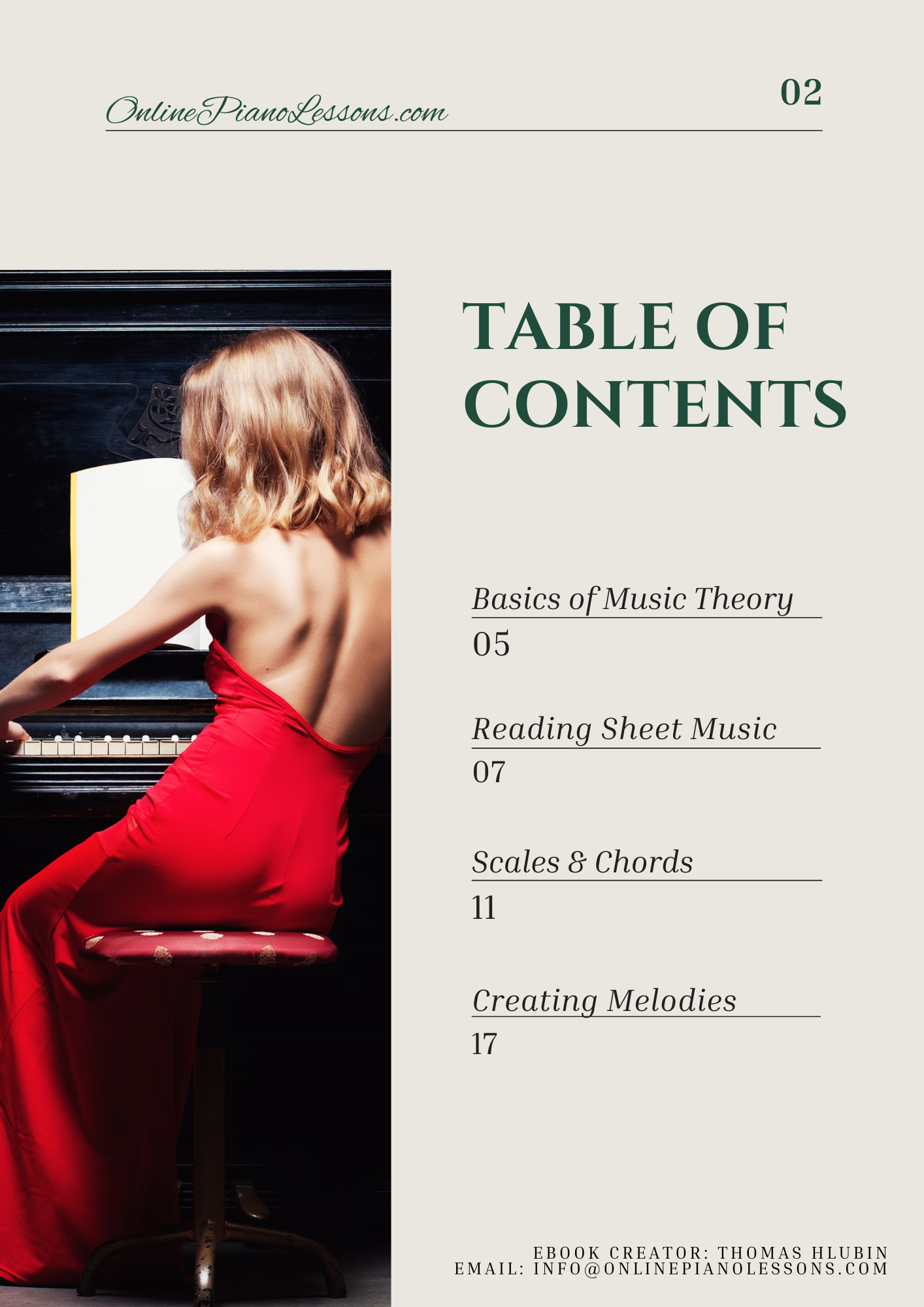If you’ve started playing piano or diving into music theory, you’ve probably come across the symbols ♯ (sharp) and ♭ (flat). At first glance, they might seem like mysterious hieroglyphs scattered across sheet music. But these simple symbols are essential to understanding how music works—both on the page and under your fingers.
In this definitive guide, we’ll break down exactly what sharps and flats are, how they work on the piano, their musical purpose, and how you can use them to unlock a deeper understanding of music.
What Are Sharps and Flats?
In music theory, a sharp (♯) means “play the note one semitone higher,” while a flat (♭) means “play the note one semitone lower.” A semitone is the smallest step between two notes in Western music—on a piano, that’s simply moving to the very next key, whether black or white.
- Sharp (♯) – Raises a note by one semitone
- Flat (♭) – Lowers a note by one semitone
Example:
- C♯ means “play the key immediately to the right of C”
- B♭ means “play the key immediately to the left of B”
Sharps and flats are not unique to the black keys—they can also apply to white keys in certain contexts (for example, E♯ is actually the same as F).
How Sharps and Flats Appear on the Piano
Look at your piano keyboard. You’ll notice a repeating pattern of black keys grouped in twos and threes between the white keys. These black keys are most commonly where sharps and flats live.
- The black key between C and D is C♯ (if you’re raising C) or D♭ (if you’re lowering D).
- The black key between F and G is F♯ (if you’re raising F) or G♭ (if you’re lowering G).
This is called enharmonic equivalence—the same pitch can be written in two different ways, depending on the musical context.
Enharmonic Notes: C♯ = D♭
Enharmonic notes are two names for the same sound. The choice between using a sharp or flat depends on the key signature and music theory rules, not the physical note itself.
Examples:
- C♯ and D♭ are the same key on the piano
- F♯ and G♭ are the same key
- E♯ and F are the same key
- C♭ and B are the same key
Why does this matter? Because reading sheet music in the right theoretical context makes it easier to understand scales, chords, and harmonic movement.
The Role of Sharps and Flats in Music Theory
Sharps and flats are more than just accidentals (notes that fall outside a given key). They are the building blocks for:
1. Key Signatures
A key signature tells you which notes in a piece are consistently sharp or flat. For example:
- The key of G major has one sharp: F♯
- The key of B♭ major has two flats: B♭ and E♭
2. Scales
Every major and minor scale includes a unique pattern of sharps and flats. Learning the sharps and flats in each scale helps you know which keys to play without thinking about it.
Example:
- D major scale = D, E, F♯, G, A, B, C♯, D
- E♭ major scale = E♭, F, G, A♭, B♭, C, D, E♭
3. Chords
Chords often include sharps or flats to create specific harmonic colors. For example:
- G major chord = G, B, D
- G7 chord = G, B, D, F
- G7♯5 chord = G, B, D♯, F
4. Modulation
When music changes keys, sharps and flats shift accordingly. Knowing your accidentals helps you navigate these changes smoothly.
How Sharps and Flats Affect Piano Fingering
Understanding sharps and flats isn’t just about reading music—they directly affect your technique. Black keys are slightly elevated and shorter than white keys, which means fingering patterns often change when sharps and flats are involved.
Pro tips:
- Use longer fingers (2, 3, 4) for black keys to avoid awkward hand positions.
- Practice scales with sharps and flats to build muscle memory.
- Keep your hand relaxed—don’t stretch unnecessarily.
Accidentals vs. Key Signatures
Sharps and flats can appear in two ways on sheet music:
- In the Key Signature – Accidentals placed at the start of the staff apply throughout the piece (unless canceled by a natural sign ♮).
- As Accidentals in the Music – A sharp or flat placed directly before a note only affects that note for the rest of the measure.
Example:
-
If you’re in C major (no sharps or flats) and you see a G♯ in one measure, that G♯ only applies until the bar line—after that, G returns to natural unless marked otherwise.
Common Sharps and Flats on the Piano
Some notes come up frequently in early piano music, especially if you’re starting with beginner-friendly keys like C major, G major, F major, or B♭ major.
Common sharps for beginners:
- F♯ in G major
- C♯ in D major
Common flats for beginners:
- B♭ in F major
- E♭ in B♭ major
The Purpose of Sharps and Flats
Sharps and flats allow composers and arrangers to:
- Create different tonalities (major, minor, modes)
- Adjust pitches for expressive or harmonic purposes
- Write music in different keys for singers or instruments
- Smooth out melodic movement between notes
Without sharps and flats, we’d be stuck in a very limited musical world.
Practice Tips for Learning Sharps and Flats
If you’re new to sharps and flats on the piano, here’s how to get comfortable:
- Play Chromatic Scales
A chromatic scale plays every semitone in sequence: C, C♯, D, D♯, E, F, F♯, G… and so on. This is the best way to understand how sharps and flats fit together. - Learn Key Signatures
Memorize which sharps or flats belong to each major and minor key. - Practice Scales in All Keys
Don’t just stick to C major—try E♭ major, F♯ major, and A♭ major. This forces your hands to adapt to black-key-heavy patterns. - Use Flashcards
Write a note name (like F♯) on one side and find it quickly on the keyboard. - Apply to Songs
Find simple songs in different keys to reinforce your sharp/flat knowledge.
Advanced Concepts: Double Sharps and Double Flats
Once you get into more advanced music theory, you’ll see symbols like 𝄪 (double sharp) and 𝄫 (double flat). These mean:
- Double Sharp (𝄪) – Raise the note by two semitones
- Double Flat (𝄫) – Lower the note by two semitones
While they may sound confusing, they exist to preserve correct spelling in certain keys and harmonies. For example, in the key of G♯ minor, the leading tone is F𝄪, not G natural.
Sharps and Flats in Real Music
Sharps and flats are not just academic—they bring music to life. Consider:
- The jazzy feel of a blues scale (C, E♭, F, F♯, G, B♭, C)
- The romantic color of Chopin’s preludes in keys like D♭ major
- The bright, ringing quality of keys with many sharps (like E major)
Each combination of sharps and flats gives the piano a different personality.
Final Thoughts on Sharps and Flats on the Piano
Sharps (♯) and flats (♭) are the language of nuance in music. They let us explore every color the piano can produce, from the warm depth of flat-heavy keys to the sparkling brightness of sharp-heavy keys. Whether you’re reading sheet music, understanding music theory, or improvising your own melodies, mastering sharps and flats will open the door to every possible key, scale, and style.
So next time you see a ♯ or ♭, remember—it’s not just a symbol. It’s an invitation to expand your musical world.




 Hi, I'm Thomas, Pianist Composer,
Hi, I'm Thomas, Pianist Composer,  I love playing piano, creating new melodies and songs, and further developing my online piano course and making updates/additions to my site OnlinePianoLessons.com!
I love playing piano, creating new melodies and songs, and further developing my online piano course and making updates/additions to my site OnlinePianoLessons.com!  Now that is what I call fun!
Now that is what I call fun!
